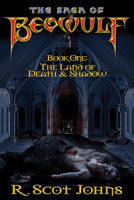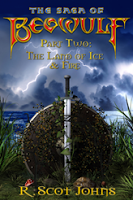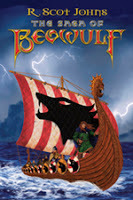R. Scot Johns's Blog, page 11
June 26, 2012
Nook Update Adds "Zoom View"
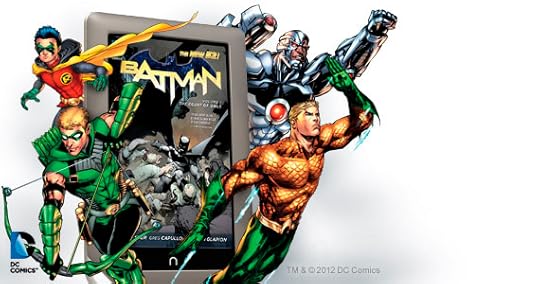
Barnes & Noble announced today the addition of DC Graphic Novels to their digital lineup, along with an update for the Nook Color and Nook Tablet that adds a new feature called Zoom View that allows for reading graphic novels and comics in a panel-by-panel sequence rather than full pages.
The addition of DC Comics brings classics such as Superman, Batman and Wonder Woman to the Nook, titles which Amazon has had since last November. I'm always annoyed with these press releases, as they try to make the latest news seem like it's by far the most amazing and important thing that's ever been achieved in the history of the world. Given that the Nook software already had the capacity (as used in Article View for magazines and Text Zoom for children's books), a panel view function should have been included from the start for graphic novels. Why only now after a year and half on the market?
The press release states that Barnes & Noble are "the leading provider of digital graphic novels and comics" in the history of forever. If this is true, then why do they deny access to their fixed layout format for graphic novels to independent comics creators? Why not open the door to small publishers and graphic artists who want to share their work? But no, BN only cater to the major publishers and illustrious comics houses, seemingly unaware that most of those comics were created by outsiders to the industry. Superman itself was originally published in a fanzine back in 1933.
But I digress.
I purchased Frank Miller's Dark Knight Returns to check out the new Zoom View (and of course to read the book again). The new Nook variant of Panel View is smooth and elegant, zooming in on the relevant portion of the page, which fills the entire screen, unlike many panel views which create a layered box over a darkened background image. This creates a more realistic feel of actually reading a comic as your eyes scan from one section to the next or up and down the page. The fluid motion is really nice, with subtle pull-ins and push-outs as the image adjusts to fit the screen.
So it's thumbs up for the new Zoom View. Now if B&N would just release the specs so we can make our own...

Published on June 26, 2012 11:53
June 16, 2012
Sci-Fi & Fantasy Infographics
As I mentioned a few posts ago, I love Infographics. and lately I've received a few comments from other readers who do too. So I thought I'd share a few of a my favorites with book-related topics that you may have missed.
A classic, of course, is this monster blob Ward Shelley did on The History of Science Fiction back in 2009. It has a small offshoot for Fantasy as well, although it's sketchy and leaves out some important works, so I'd like to see one done exclusively for the Fantasy genre. But if you're really into Sci-Fi and want a historical overview of what to read, this one is as good as any. Shelley, by the way, does charts reminiscent of the epic Wall Chart of World History by Edward Hull back in 1890, of which I have a facsimile edition. I like the style, and the overall graphic representation of a sci-fi alien fits it perfectly.

SF Signal just recently did one on the Hugo Award that has some interesting historical points as well. Along with a nice historical overview of the award and six of the major winners, it has a timeline that points out some of the major works and authors in the genre, as well as breaking down some stats about the award categories.

Toward the end of last year NPR published a list of the Top 100 Sci-Fi / Fantasy reads compiled from over 60,000 listener votes, and once again SF Signal put together a nice visual guide based on that data. Not technically an Infographic, it's presented as a Flowchart to help you navigate the mammoth list, according to your interests and personal reading preferences, which is always a better way to approach ranked lists of other people's favorites. It's quite humorous to read though, too. SF Signal has also just recently added an online interactive version, which is kind of fun, and you can also download a high-resolution version, good for printing or for those of us with bad eyesight.

And finally, Goodreads just did one back in March on Dystopian Fiction, which has seen a rapid rise in popularity lately, particularly among the Young Adult crowd. This is not all too surprising, given the recent financial meltdown and increasing popularity of anti-establishment demonstrations such as Occupy Wall Street and the Tea Party protests. Steampunk and cybergoth is at an all-time high, and this chart barely scratches the surface of what's been written on the subject of oppressed societies and post-apocalyptic worlds. From Ayn Rand's Anthem and Atlas Shrugged to James Dashner's The Maze Runner and Jeanne DuPrau's The City of Ember, there is plenty to read in this genre, so long as books remain free! For more selections take a look at Wikipedia's List of Dystopian Literature.



A classic, of course, is this monster blob Ward Shelley did on The History of Science Fiction back in 2009. It has a small offshoot for Fantasy as well, although it's sketchy and leaves out some important works, so I'd like to see one done exclusively for the Fantasy genre. But if you're really into Sci-Fi and want a historical overview of what to read, this one is as good as any. Shelley, by the way, does charts reminiscent of the epic Wall Chart of World History by Edward Hull back in 1890, of which I have a facsimile edition. I like the style, and the overall graphic representation of a sci-fi alien fits it perfectly.

SF Signal just recently did one on the Hugo Award that has some interesting historical points as well. Along with a nice historical overview of the award and six of the major winners, it has a timeline that points out some of the major works and authors in the genre, as well as breaking down some stats about the award categories.

Toward the end of last year NPR published a list of the Top 100 Sci-Fi / Fantasy reads compiled from over 60,000 listener votes, and once again SF Signal put together a nice visual guide based on that data. Not technically an Infographic, it's presented as a Flowchart to help you navigate the mammoth list, according to your interests and personal reading preferences, which is always a better way to approach ranked lists of other people's favorites. It's quite humorous to read though, too. SF Signal has also just recently added an online interactive version, which is kind of fun, and you can also download a high-resolution version, good for printing or for those of us with bad eyesight.

And finally, Goodreads just did one back in March on Dystopian Fiction, which has seen a rapid rise in popularity lately, particularly among the Young Adult crowd. This is not all too surprising, given the recent financial meltdown and increasing popularity of anti-establishment demonstrations such as Occupy Wall Street and the Tea Party protests. Steampunk and cybergoth is at an all-time high, and this chart barely scratches the surface of what's been written on the subject of oppressed societies and post-apocalyptic worlds. From Ayn Rand's Anthem and Atlas Shrugged to James Dashner's The Maze Runner and Jeanne DuPrau's The City of Ember, there is plenty to read in this genre, so long as books remain free! For more selections take a look at Wikipedia's List of Dystopian Literature.


Published on June 16, 2012 13:33
June 15, 2012
First Quarter Sales Stats Analysis

Chart courtesy of GalleyCat
Statistics for the first quarter of 2012 are in, as supplied by the Association of American Publishers from 1,189 reporting publishers and distribution outlets, with print sales slipping further as digital continues its steady takeover of the industry.
Leading the charge for both March and Year-To-Date was the Children's/Young Adult segment, with a total gain of 63.6% thus far in 2012 and +46.6% in March, helped in no small part by a 233% increase in ebooks in that category for the year, and +173.9% for March. Showing just how strong the C/YA sector is right now was the fact that it saw the only steady growth in print sales, with a +53.9% increase in hardcover sales for the year, while Adult Hardcover managed only a marginal 2.7% gain. All other print sales were down, with Religious titles even showing a loss of -1.8% for the year thus far.
Children/Young Adult (Total): +63.6% YTD / +46.6% in March
Children/Young Adult Hardbacks: +67% YTD ($187.7 million)
Children/Young Adult eBooks: +233% YTD ($64.3 million)
Adult Trade eBooks: +28.1% YTD / +33.2 in March
Adult Trade Paperbacks: -10.5% YTD / -11.6% in March
Adult Mass Market Paperback: -20.8% YTD
Total Adult Sales (Print & Digital): +1.8% YTD
A milestone was reached for eBooks as their total sales volume surpassed that of Adult Hardbacks, with $282.3 million for digital compared to $229.6 for print editions. Of course, these are all ebooks compared to just one category of print, but it clearly illustrates the growth that ebooks are seeing. When ebooks surpassed hardback sales on Amazon last year it was only a matter of months before those sales eclipsed paperbacks as well, so a precedent has been set. Only time will tell if that trend continues in the industry as a whole. And with Adult Paperback revenues declining in this first quarter to $299.8 million from last year's $335 million for the same time frame, it's not likely to take long for that to occur. Already ebooks account for nearly three times the revenue of Adult Mass Market Paperbacks, which saw a 20.8% drop from $124.8 million to $98.9 for the quarter.
All told, Adult print sales for Q1 came to $628.3 million Year-To-Date, while ebooks brought in nearly half as much at $282.3 million (excluding Children's/Young Adult titles).
Another milestone statistic was achieved for digital this quarter, with downloadable audio titles outselling physical audio sales for the first time, with digital sales of $25.0 million (+32.7%) compared to physical sales of $19.1 million (+3.4%). This almost certainly due to the rising use of a tablets and e-readers as audio devices as it has become increasingly easy to stream and download audio content.
Finally, all education segments fell except for University presses, which saw an overall increase of 3.6%, although this is not too surprising for end of term. Educational sales see their greatest gains in August and September, which is something like their holiday season.
While the digital transformation continues apace, we are no longer seeing the consistent three-figure gains that have been the norm for the past few years, although the gains for digital are still in the double digits, as are the losses for print. With consistent monthly drops of ten and twenty percent, it won't take long for print to shrink below the point of cost effective production, if it hasn't already for most titles.
Still, what this tells me is that we may be seeing the beginning of a crest approaching as digital adoption rates reach market saturation. Early adopter phase is long past, and the bandwagon stage is well under way. With one in four Americans now owning an electronic reading device of one form or another, the initial rapid ingestion of digital content is bound to slow as readers now must wade through their newly loaded bookshelves. For some, certainly, the newness will wear off, the initial excitement will fade, and the unique e-reading experience will become the norm as reading habits return to their pre-digital rate.
Or this may just be a post-holiday slump.
UPDATED 6-15-2012 3:42 PM to include additional statistics and analysis, along with the chart from GalleyCat.

Published on June 15, 2012 15:02
June 14, 2012
Kindle iOS App Adds Support for Fixed Layout
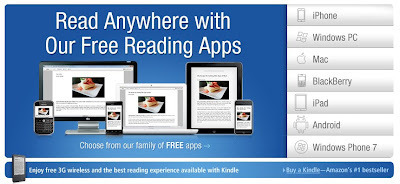
Finally, you really can read your Kindle ebooks anywhere. Amazon today released an update to their Kindle app for iOS that adds support for fixed layout KF8 format ebooks, so that now at last you can view Kindle children's books and graphic novels as intended on your iPad, a function that the Android app has had for some time now (since back in March).
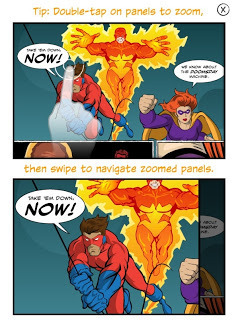
One thing the Android app is getting that it didn't have, however, is two-page layouts in landscape mode, which is something that those illustrated ebooks will require, or greatly benefit from at the least. Other (belated) upgrades to the Kindle for Android app are controls for margin and line spacing, basic features inexplicably missing from the Android version. Each of these features are being added to the Kindle Cloud Reader as well, along with the usual bug fixes for both Android and iOS.
The Kindle for iOS app is also getting a visual makeover, with a cleaner look and improved reading experience. The new additions will feature a "beautiful layout and full color," according to the Amazon release, with support for Text Pop-Ups in children's books and Panel View in comics and graphic novels. Content search for title and author has also been added, and the bug that prevented looking up words on Google or Wikipedia has been fixed.
So only two days after BISG released their ebook format grid it's already out of date, and very likely not for the last time.

Published on June 14, 2012 15:30
June 12, 2012
eBooks Will Be 50% of US Book Market by 2016

PaidContent has posted this graph based on new data from Pricewaterhouse Coopers, projecting total trade book sales to hit nearly $11 billion by 2016 and account for half of the total North American book market. While overall industry revenue is expected to remain nearly flat during that time, digital content will begin to make up for the continued decline in print book sales by 2013.
The significance of these figures is that we're talking about sales now rather than units. Total North American book revenue is projected to reach $21 billion by 2016 - up just 1.1% from last year's $19.5 billion - with ebooks accounting for $11 billion of that number. This is, of course, assuming a consistent trajectory for digital growth, which will become increasingly difficult to maintain as the figures get larger and adoption rates begin to slow as they reach saturation. No one knows for sure at what point that will occur, or if we're anywhere near the top of that growth curve.
Although there have been some stunning numbers with regard to ebook growth lately (global ebook sales up 332%), these figures seem a little overly optimistic to me (well, not for the print industry). For one thing, PwCoopers is giving 2011 North American ebook sales as $2.69 billion, when the AAP statistics for last year show US digital sales at just under $1 billion, and I find it difficult to believe the difference of $1.69 billion being made up by Canadian/Mexican ebook revenues. According to an NRC report, English-language ebooks accounted for 10% of Canadian book sales last year, so I suppose it's possible. However, PwC bases its statistics on surveys and samplings rather than hard, fast data, so I'm more inclined to go with AAP stats. But for an overview of the general global landscape the projections are still revealing.
Elsewhere, we can see that Western European ebook sales are expected to increase, an expectation buoyed by this morning's announcement that the French Publishers' Association has dropped its lawsuit against Google's Digital Book Project, opening the way for a flood of new content to enter the European market. Latin America, for whatever reason, just doesn't seem to be interested, and the flatline for the Middle East/Africa region is likely due as much to a lack of access than anything (a general economic poverty notwithstanding).
The Asian Pacific market is shown collectively in the graph above as roughly doubling to $2.25 billion by 2016, while the chart below breaks out the major Eastern regions, with Japan accounting for the bulk of sales and growth. South Korea, whose digital market share is the largest in the world at 24.2%, will continue the slow and steady climb it has seen for some time as an early adopter nation, while China and Australia will show rapid growth as digital content becomes available for the first time, due both to new distribution channels and improvements in format and device capabilities for displaying Asian languages.
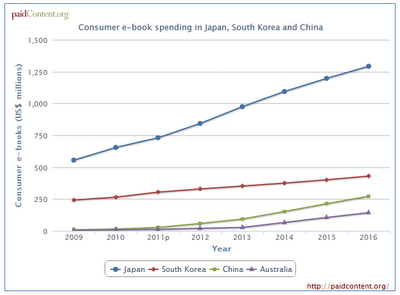

Published on June 12, 2012 11:01
June 11, 2012
BISG EPUB3 Support Grid
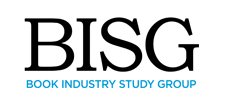
The Book Industry Study Group has just released a monster resource in the form of a chart comparing functionality support among the various e-reading platforms. Ostensibly created to provide a reference for ePub 3.0 support, it also lists the non-ePub compliant features of the Kindle line, as well as support for other formats such as PDF, RTF, and MS Word.
The chart is provided in the form of an Excel spreadsheet with sections for each specific platform, divided further into columns for each of their specific device and app iterations. Each of the functionality elements are provided in rows down the page, again divided into groups and subgroups, with some ninety features given in fourteen groupings. Support for each feature is signified by an X in the appropriate cell, while an O shows support for a non-ePub compliant version of the feature (i.e. for KF8 or PDFs). An unsupported feature gets a "No" or "N/A" (or an occasional note), with the remaining cells receiving question marks where information was not currently available.
While this is sure to become a go-to guide for future reference, at present there are a lot of question marks, including all five columns of the Kobo family and much of the Nook line, as well as three of the four app-only platforms listed, these being Overdrive, Azardi and BlueFire. Safari Books is the fourth, and they have almost no support for ePub3 at all. The Sony Reader didn't even get an entry. Apple, who just recently announced officially iBooks support for ePub3, fares quite well, as one might suspect. I was most surprised at how thoroughly Ingram's VitalSource e-textbook platform supports ePub3 - more so even than the IDPF's own Readium Project software (which is pretty good) - so if you create content for academic texts you're in good shape.
I did find one inaccuracy in the information regarding KF8, which is not surprising. In the listing for Orientation Lock support the grid makes a note that creators of content in KF8 must choose either landscape or portrait orientation, but as you know if you've read my KF8 tutorials from back in March this is not true. While the Kindle User's Guide lists only those two options, "orientation-lock: none" is, in fact, a valid entry, allowing the content to auto-rotate. I have tested this on both the Kindle Fire and the Kindle for Android app on my Droid Razr Maxx, and sent a note off to BISG this morning pointing it out, to which I received a kind reply. We'll see if they update it. They may be going only off the specs here, and marking only officially supported features with an X (or O in this case), although the chart states that much of the information was provided by third-party users and not the vendors themselves.
BISG's release announcement states that they plan to update the grid data monthly, so be sure to bookmark the page and check back often. The digital publishing industry is changing at a rapid pace, and a resource such as this will be helpful in attempting to navigate that landscape.

Published on June 11, 2012 17:45
June 5, 2012
Self-Publishing Is Now "Traditional"
[image error]
Click image for full version
Bowker released updated info from its Books In Print database today, detailing year-on-year changes in ISBN registrations for new book titles. I've truncated the chart above to show only the last three years, as well as 2002, the earliest year reported, including the "% of change" statistics for those periods.
Two important changes occurred last year in terms of both the data and the way that data is presented. First, overall output declined for the first time in a decade. Looking at the second-to-last column (% change 2010-11) you'll see that this is entirely due to a decline in the "non-traditional" category, as output among the remaining "traditional" content increased by 6% (although this is actually down from its 9% gain the prior year). The reasons for this will become clear in the second point...
This year Bowker has for the first time integrated self-published titles into the "traditional" categories, where previously they had been lumped together with "non-traditional" titles. This itself has two implications: 1) self-published titles are now considered "traditional" (at least by the Books In Print people), in the sense of being a legitimate and standard practice in the publishing industry (i.e. a part of it rather than apart and outside of it), and 2) non-traditional output is not.
The reason for this distinction can easily be seen by looking at the top producers of published content, as determined by the number of ISBNs registered in 2011 (and mind you, these are not sales figures, but only numbers of titles produced, and only in print editions; ebooks and audiobooks are not included in these statistics):
BiblioBazaar - 773,857
General Books LLC - 249,871
VDM Verlag Dr. Mueller e.K. - 68,509
CreateSpace - 57,512
Of these top four, the first three produce "non-traditional" content (together accounting for 72% of total output in 2011), in this case what Bowker defines as Reprint/POD content. BiblioBazaar and General Books LLC, who together published just under a million titles last year alone, both produce reproductions of "historical" titles by scanning out of print and public domain books for reprint via Print On Demand. VDM Verlag produces print editions of content skimmed outright from open sources such as Wikipedia. Only when we get to number four do we find a publisher that actually produces original content, this being Amazon's CreateSpace division, who until recently also allowed public domain content to be published through their POD service.
The reason for the overall decline in titles produced last year thus becomes clear. Given the source of most "non-traditional" content, it was bound to slow down rapidly after its initial ingestion of public domain content, as soon as that pool was used up. In addition, as mentioned, Amazon has recently restricted publication of public domain titles in its store, pulling any titles that contain only content that can be acquired for free online at sites like Project Gutenberg (public domain titles must now contain annotations or other original content along with it). This will further speed the decline of non-traditional content output, which will see an even larger decline in next year's chart, very likely falling back to near its pre-2009 levels in a triple-digit decline.
A further statistic not show on this chart is that of the 347,178 "traditional" titles published last year, 211,269 of these were self-published (60.8%), showing that self-publishing propelled nearly all the growth in that category. According to Kelly Gallagher, Vice President of Bowker Marketing Research,
That self-publishing is now considered a "traditional" means of getting content to an audience has vast implications for an industry in flux. With no distinction being made between trade and independent publishing in statistics such as these, a battle can be said to have been won for self-published authors who champion the independent spirit that shaped this nation.

Click image for full version
Bowker released updated info from its Books In Print database today, detailing year-on-year changes in ISBN registrations for new book titles. I've truncated the chart above to show only the last three years, as well as 2002, the earliest year reported, including the "% of change" statistics for those periods.
Two important changes occurred last year in terms of both the data and the way that data is presented. First, overall output declined for the first time in a decade. Looking at the second-to-last column (% change 2010-11) you'll see that this is entirely due to a decline in the "non-traditional" category, as output among the remaining "traditional" content increased by 6% (although this is actually down from its 9% gain the prior year). The reasons for this will become clear in the second point...
This year Bowker has for the first time integrated self-published titles into the "traditional" categories, where previously they had been lumped together with "non-traditional" titles. This itself has two implications: 1) self-published titles are now considered "traditional" (at least by the Books In Print people), in the sense of being a legitimate and standard practice in the publishing industry (i.e. a part of it rather than apart and outside of it), and 2) non-traditional output is not.
The reason for this distinction can easily be seen by looking at the top producers of published content, as determined by the number of ISBNs registered in 2011 (and mind you, these are not sales figures, but only numbers of titles produced, and only in print editions; ebooks and audiobooks are not included in these statistics):
BiblioBazaar - 773,857
General Books LLC - 249,871
VDM Verlag Dr. Mueller e.K. - 68,509
CreateSpace - 57,512
Of these top four, the first three produce "non-traditional" content (together accounting for 72% of total output in 2011), in this case what Bowker defines as Reprint/POD content. BiblioBazaar and General Books LLC, who together published just under a million titles last year alone, both produce reproductions of "historical" titles by scanning out of print and public domain books for reprint via Print On Demand. VDM Verlag produces print editions of content skimmed outright from open sources such as Wikipedia. Only when we get to number four do we find a publisher that actually produces original content, this being Amazon's CreateSpace division, who until recently also allowed public domain content to be published through their POD service.
The reason for the overall decline in titles produced last year thus becomes clear. Given the source of most "non-traditional" content, it was bound to slow down rapidly after its initial ingestion of public domain content, as soon as that pool was used up. In addition, as mentioned, Amazon has recently restricted publication of public domain titles in its store, pulling any titles that contain only content that can be acquired for free online at sites like Project Gutenberg (public domain titles must now contain annotations or other original content along with it). This will further speed the decline of non-traditional content output, which will see an even larger decline in next year's chart, very likely falling back to near its pre-2009 levels in a triple-digit decline.
A further statistic not show on this chart is that of the 347,178 "traditional" titles published last year, 211,269 of these were self-published (60.8%), showing that self-publishing propelled nearly all the growth in that category. According to Kelly Gallagher, Vice President of Bowker Marketing Research,
"Self-publishing is a true legitimate power to be reckoned with. Coupled with the explosive growth of e-books and digital content – these two forces are moving the industry in dramatic ways. What was once relegated to the outskirts of our industry – and even took on demeaning names like ‘vanity press’ – is now not only a viable alternative but what is driving the title growth of our industry today."
That self-publishing is now considered a "traditional" means of getting content to an audience has vast implications for an industry in flux. With no distinction being made between trade and independent publishing in statistics such as these, a battle can be said to have been won for self-published authors who champion the independent spirit that shaped this nation.

Published on June 05, 2012 15:35
Kobo to Launch Self-Pub Portal
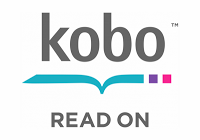
Canada's premier ebook retailer and device maker Kobo announced at BEA today that it will launch a self-service publishing platform on its website for authors to directly upload their work into its store, circumventing the need to go through a third-party aggregator such as Smashwords or Book Baby. Kobo "Writing Life" will launch in just a few weeks at the end of June, offering the now-standard 70% royalty rate for titles with a retail price under $12.99 (and presumably over $2.99, although this was not mentioned in either the blog post or press release).
Kobo has a significant share of the international market, with 46% of Canadian ebook sales (compared to Amazon's 24%) and 50% in France. Figures released by the company today show ebook downloads up 400% over last year, while sales of Kobo e-readers grew 160%.
More importantly, Kobo's ebooks are based on open ePub standards, making them readable on any device that supports ePub. This is important for self-pubbed authors, as it means that although this is one more avenue to manage, you do not need to format a separate ebook file for the upload. Kobo provides free conversion to ePub (and accepts ePub directly), so if you're already publishing to Barnes & Noble via PubIt the same file should work just fine. Also like B&N, Kobo does not require an IBSN, although they recommend one, as some international markets require it.
An additional feature of Kobo Writing Life is that you will be allowed to set your title's price to free, something other e-tailers either do not allow or severely limit with promotion codes or windows. The platform also features a wide range of useful features such as integrated social networking and detailed analytics in real time across multiple markets. And they make some really nice devices.
In preparation for the launch I've purchased a Kobo Vox and removed my titles from Kobo distribution via Smashwords. Thus is Smashwords, that great disintermediary of the traditional publishing arena, itself being disintermediated.

Published on June 05, 2012 12:52
June 4, 2012
Disaster!

@)$*!)#(!! Website broken.
So I've been working for quite a while now on a new website design, complete with an online store where I can sell direct downloads of ebooks as well as print editions, and it was finally coming along nicely when disaster struck.
You may recall this all began back at spring break when I decided to migrate the Fantasy Castle Books website to a new web host, which turned out to be a major ordeal. But having got that matter all settled I set to work rebuilding a new home for my books. Yesterday I had it all ready to go, complete with PayPal integration and interactive store content, when the final piece of the puzzle led to a critical failure.
In order to finalize the PayPal Express Checkout I needed an SSL certificate for the website, but in the host transfer process I had made fantasycastlebooks.com an add-on to my previously existing rscotjohns.com domain, but you can only get an SSL certificate for primary domains. So I did a domain rename to switch the two, and that's when it all fell apart. Website crashed. Nothing worked. Links all broken. Can't be fixed.
Not only are my pages all corrupt, but the LiveSite software I was using doesn't even work now, even after uninstalling and doing a fresh install. It's just garbled nonsense. Tech support, no help. Documentation, no help. Apirin, no help at all. Can install on sub-domain, but will not work on primary site. Frustrating beyond belief. Complete waste of two months' work.
So here I was all prepared to launch the new website and bookstore and get back to work on the new book over summer break, and instead I'm faced with the prospect of starting all over from scratch. This is why people pay good money for web designers.

Published on June 04, 2012 15:00
May 26, 2012
The Saga of Beowulf eBook Updates
Published on May 26, 2012 12:34

